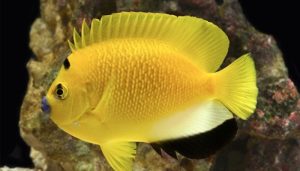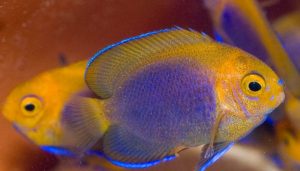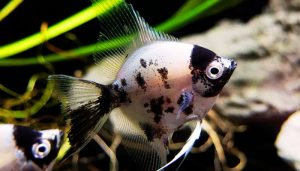is shrimp a bottom feeder? Imagine watching a peaceful aquarium scene: tiny shrimp gracefully scuttling along the tank floor, seemingly cleaning as they go. But what exactly are they doing, and why are they so drawn to the bottom of the tank? The answer lies in their nature. Are shrimp bottom feeders?
Yes, shrimp are quintessential bottom dwellers, thriving in the substrate of aquatic environments where they scavenge for food. This fascinating behavior makes them not just captivating to watch but also invaluable in keeping aquariums clean.
All shrimp are bottom feeders, meaning they forage for food primarily on the floor of their habitat. They consume uneaten fish food, algae, and organic debris, playing an essential role in maintaining a balanced ecosystem.
This natural “clean-up crew” behavior makes them ideal companions in aquariums and vital contributors to the health of aquatic systems in the wild. Their bottom-feeding habits ensure no morsel goes to waste, promoting cleanliness and reducing the risk of harmful waste buildup.
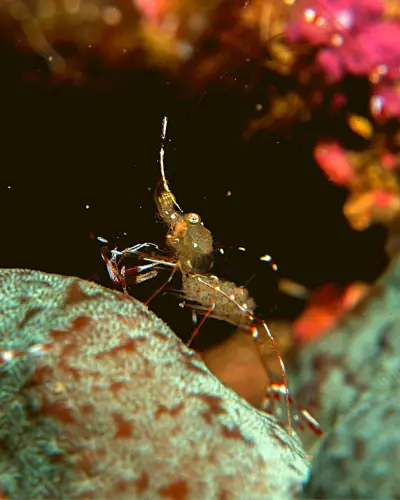
Ready to dive deeper into the incredible world of shrimp? From their role in ecosystems to how they interact with other tank mates, this post explores everything you need to know about these remarkable aquatic creatures.
Table of Contents
ToggleWhat is a Bottom Feeder?
A bottom feeder is a type of aquatic animal that dwells on the ocean floor, feeding on the sediment or detritus found there. Common examples of bottom feeders include cod, halibut, shrimp, scallops, and other fish and shellfish.
Many bottom feeders play a crucial role in the marine ecosystem by consuming decaying matter and maintaining a healthy balance. These organisms can have a varied diet, relying on algae, smaller fish, and squid for sustenance.
The adaptability of bottom feeders allows them to survive in diverse environments, from deep-sea trenches to shallow coastal regions. They are often characterized by their ability to scavenge for food, using their specialized anatomy to sift through the sediments and look for nutrients.
While some may perceive bottom feeders negatively, they are essential in maintaining our oceans’ overall health and ecosystem dynamics.
Are Shrimp Bottom Feeders Fish?
Are shrimps bottom feeders? Shrimp are a type of crustacean, and some species of shrimp are known to feed on the bottom of bodies of water, which may lead to the misconception that all shrimp are bottom feeders.
However, not all species of shrimp behave in this way. Some species of shrimp are known to feed on algae, while others may be predators that feed on smaller organisms.
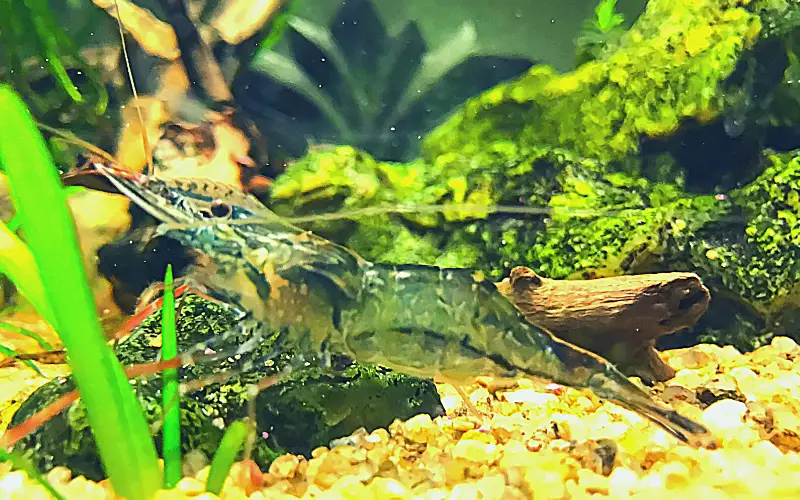
Therefore, while some species of shrimp may be considered bottom feeders, it is not accurate to categorize all shrimp as such. It’s important to note that shrimp can be a healthy part of a varied diet, as they are low in fat and calories and rich in protein and nutrients.
When purchasing or consuming shrimp, choosing reputable sources is significant to ensure they are adequately cleaned and prepared.
5 Alarming Facts about Shrimp as Bottom Feeders
– Shrimp as Bottom Feeders
Shrimp are indeed bottom feeders and belong to the crustaceans that scavenge for food near the bottom of bodies of water. These bottom-dwelling creatures play a crucial role in the aquatic ecosystem by consuming various organic matter and algae, helping to maintain a healthy environment.
– Shrimp and Their Diet
Bottom feeder shrimp primarily feed on tiny organisms and residue on the lake floor or sediment. They eat algae and lake plants, essential for balancing the ecosystem and supporting other aquatic creatures.
– Shrimp in Aquatic Food Chains
Shrimp hold a vital place in aquatic food chains. Many bottom-feeder fish, such as catfish, loaches, and tilapia, prey on shrimp. Additionally, predatory fish like cod, halibut, and tuna consider shrimp a part of their diet.
– Farming Shrimp vs. Wild-Caught Shrimp
Shrimp farming is a popular industry, providing a significant portion of the world’s seafood supply. Farmed shrimp are typically fed a controlled diet, making them safe to eat. On the other hand, wild-caught shrimp consume a more varied diet, which may include contaminants like mercury. It is essential to choose sustainable and responsibly sourced shrimp for consumption.
– Shrimp as a Source of Omega-3 Fatty Acids
Shrimp as a food is a good source of omega-3 fatty acids essential for heart-healthy benefits. In moderation, including shrimp in your diet can provide these beneficial nutrients and promote overall well-being.
Is it Safe to Eat Bottom Feeders?
Whether or not it is safe to eat bottom feeders depends on the specific fish and the environment in which it was raised. Some bottom feeders, such as tilapia and cod, are safe to eat in moderation.
These fish are often farmed in clean and healthy environments, and their diet does not contain high levels of pollutants. Other bottom feeders, such as catfish and carp, may have higher levels of mercury and other toxins, and their consumption should be limited.
Generally, it is best to consult a doctor or registered dietitian before eating bottom feeders, especially if you are pregnant, breastfeeding, or have a chronic health condition.
Here are some tips for safely eating bottom feeders:
- Choose fish low in mercury, such as tilapia, cod, and flounder.
- Avoid mercury-rich fish, such as sharks, swordfish, and tilefish.
- Choose farmed fish that are raised in clean and healthy environments.
- Trim away the fatty parts of the fish, such as the skin and belly fat.
- Cook the fish thoroughly.
Bottom feeders can be a healthy addition to your diet, but choosing them wisely and cooking them properly is essential. By following these vital tips, you can enjoy the benefits of eating bottom feeders without exposing yourself to harmful toxins.
Here are some additional things to keep in mind:
- The risk of mercury poisoning from bottom feeders is higher for children, pregnant women, and breastfeeding women.
- The mercury amount you can safely consume depends on age and overall health.
- If you are concerned about the mercury content of bottom feeders, you can talk to your family doctor about how much you can safely eat.
Overall, bottom feeders can be a safe and healthy part of your diet. However, choosing them wisely and cooking them is crucial to reducing your mercury poisoning risk.
Are Freshwater Shrimp Bottom-Dwellers?
Freshwater shrimp are indeed bottom-dwellers. These crustaceans are commonly found in freshwater environments and are known for their bottom-feeding habits. They are often referred to as bottom feeders or scavengers due to their tendency to scavenge at the bottom of the water column.
In a freshwater tank, freshwater shrimp can be frequently spotted rummaging through the substrate, searching for food. They play a vital role in maintaining the cleanliness of the aquarium by consuming various organic matter and debris.
Moreover, these shrimp also assist in controlling the alga growth in the bottom of the tank as they feed on algae that accumulate on the bottom surfaces. Their distinctive bottom-dwelling behavior sets them apart from other freshwater organisms and contributes to the overall balance of the aquatic ecosystem.
What Does the Bible Say About Bottom Feeders?
The Bible does not explicitly mention bottom feeders, but it does provide insights about creatures that dwell near the bottom of bodies of water in search of food. The creatures mentioned in the Bible include catfish, crabs, clams, snails, and crayfish.
In the book of Leviticus, these creatures are considered unclean and are not to be eaten by the Israelites. Leviticus 11:10 states, “But all aquatic creatures in the seas or streams that do not have scales and fins—whether among all the swarming things or all the other living creatures in the water—you are to regard as unclean.”
However, it is essential to note that the Bible’s guidance on clean and unclean animals was specific to the Israelite dietary laws and does not necessarily indicate moral or spiritual significance.
Does the Presence of Freshwater Shrimp Indicate Clean Water?
The presence of freshwater shrimp can indicate clean water in a freshwater ecosystem. Freshwater shrimp are highly sensitive to pollutants and changes in water quality. They require a clean and well-oxygenated tank environment to survive and reproduce.
Therefore, their presence can be seen as an indicator of good water quality. If freshwater shrimp thrive in a body of water, the water is likely free of contaminants such as heavy metals, pesticides, and other pollutants.
In addition, the presence of freshwater shrimp can also suggest the presence of other aquatic organisms that rely on clean water conditions. Overall, observing the presence of freshwater shrimp can be a good indication of the health and cleanliness of a freshwater ecosystem.
Commonly Asked Questions about Bottom Feeder Shrimp (FAQs)
Are shrimp considered shellfish?
Yes, shrimp fall under shellfish alongside crabs, lobster crayfish, and clams.
Can shrimp be found in freshwater?
Freshwater shrimp, such as the popular species “Cherry Shrimp,” are commonly found in freshwater aquariums.
Are there many bottom-feeder fish species in freshwater tanks?
There are various bottom-feeder fish, such as catfish, loaches, and Otocinclus, commonly kept in freshwater aquariums for their low maintenance and algae-eating capabilities.
Do shrimp scavenge for food in the wild?
Yes, shrimp are natural scavengers and spend their time near the bottom of the water in search of food.
Are all species of shrimp considered bottom feeders?
Not all shrimp species are considered bottom feeders, but many are scavenging, consuming organic matter near the lake floor.
How can I ensure I’m buying sustainably sourced shrimp?
Look for labels or certifications like “MSC” (Marine Stewardship Council) and “Aquaculture Stewardship Council” (ASC) when purchasing shrimp to ensure it’s sustainably sourced and not contributing to overfishing.
What do shrimp eat?
Are shrimp considered bottom feeders? Shrimp are omnivorous animals and will eat various foods, including algae, plankton, small fish, and bottom-dwelling organisms.
Do shrimp eat other shrimp?
Some species of shrimp are cannibalistic and will eat other shrimp if given the opportunity.
What are some common bottom-feeding fish?
Some common bottom-feeding fish include tilapia, catfish, and loaches.
Can I keep shrimp with other bottom-feeding fish?
Keeping shrimp with other bottom-feeding fish is generally safe as long as they are not aggressive toward each other.
Do bottom-feeding fish eat shrimp?
It depends on the species of fish. Some bottom-feeding fish may eat shrimp if they can catch them.
Can shrimp be considered seafood?
Yes, shrimp are considered seafood and are often used in seafood dishes.
Do shrimp live at the bottom of lakes?
Are shrimp bottom dwellers? Some shrimp species can be found in freshwater lakes, including the bottom of the lakes.
Are shrimp wild-caught or farm-raised?
Shrimp can be both wild-caught and farm-raised. The majority of shrimp consumed in the U.S. are farm-raised.
Are all shrimp bottom feeders?
is shrimp bottom feeders? Not all shrimp are bottom feeders. While many species like ghost shrimp and bamboo shrimp are bottom feeders, others like cleaner shrimp are mid-water or surface feeders.
Conclusion
So, is shrimp considered a bottom feeder? Shrimp are fascinating creatures that play a significant role in maintaining a healthy aquatic environment. As bottom feeders, they scavenge for food near the bottom of bodies of water, contributing to the balance of the ecosystem. Whether wild-caught or farmed, shrimp provide a good source of omega-3 fatty acids, promoting heart-healthy benefits. When choosing shrimp for consumption, choose sustainably sourced options to support responsible fishing practices and protect our marine ecosystem.
Next time you enjoy a delicious shrimp dish, you can appreciate these bottom-dwelling critters’ vital role in our aquatic world. Remember, our marine life’s and the environment’s well-being depends on responsible consumption and sustainable practices. So, the next time you’re looking for seafood, make sure you’re making an eco-friendly choice.
You might also like
- Do Shrimp Eat Fish Poop: (5 Best Tank Clean-up Crews!)
- Ghost Shrimp Turning Brown – 5 Causes & Proven Solutions
- Can Ghost Shrimp Live with Other Shrimp: (You’ll Be Shocked)
- What Do Ghost Shrimp Eat: Top 5 Foods For Optimal Health
- Do Shrimp Need a Heater: 3 Surprising Benefits of Warm Water
- Ghost Shrimp Male vs Female: 7 Key Differences You’ll love
- Where Do Ghost Shrimp Lay Their Eggs on Glass: (5 Surprising Locations!)
- Does Ghost Shrimp Eat Snails: The Answer Might Surprise You!
- Male Vs Female Red Cherry Shrimp: 3 Simple Hacks for Accurate ID
- Do You Need a Heater for Cherry Shrimp: Truth Will Save Your Shrimp!


